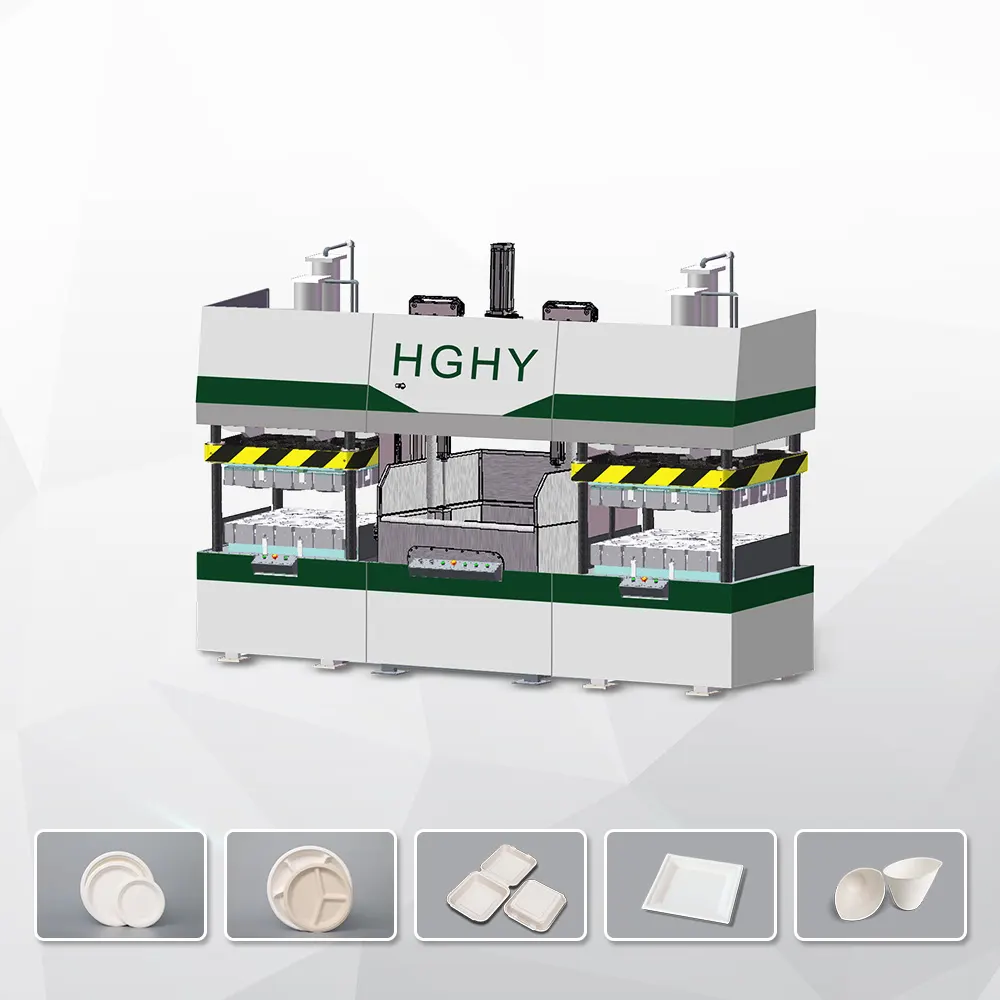As demand for eco-friendly alternatives to plastic tableware grows, molded pulp products made from renewable plant fibers have emerged as a sustainable solution. However, the performance, appearance, and cost-effectiveness of pulp-based tableware heavily depend on the type of raw material used. Commonly used fibers include wheat straw, bamboo pulp, sugarcane bagasse, and mixed fiber pulp.
This article explores the key characteristics of each raw material and identifies the most effective combinations for producing high-quality biodegradable tableware.
1. Overview of Common Pulp Materials
| Pulp Type | Source | Key Advantages | Limitations |
|---|---|---|---|
| Wheat Straw / Wheat Straw Pulp | Agricultural waste | Low cost, renewable, relatively strong fibers | Coarse texture, darker color, less refined surface |
| Bamboo Pulp | Renewable bamboo plants | High tensile strength, durability, smooth surface | Higher cost, more complex processing |
| Sugarcane Bagasse Pulp | Byproduct of sugar processing | Lightweight, good moldability, bright color, smooth texture | Medium strength, less flexible |
| Mixed Pulp | Custom fiber blends | Balanced properties: strength, cost, finish, appearance | Requires controlled formulation and process precision |
2. Best Performing Fiber Combinations for Tableware Production
1. Sugarcane Bagasse + Bamboo Pulp (Recommended ratio: 70:30)
Why it works:
Sugarcane bagasse offers excellent moldability and smooth surface finish.
Bamboo pulp adds flexibility and tensile strength.
Produces a clean, bright, and high-strength product with refined appearance.
Ideal for: High-end food containers, soup bowls, lids, and export-grade items.
2. Wheat Straw Pulp + Sugarcane Bagasse (Recommended ratio: 60:40 or 50:50)
Why it works:
Wheat straw contributes long fibers, increasing structure strength.
Bagasse improves moldability and surface smoothness.
Balances cost-efficiency with acceptable product quality.
Ideal for: Mid-range food trays, paper bowls, fruit trays, or cafeteria packaging.
3. Sugarcane Bagasse + Recycled Paper Pulp (Recommended ratio: 80:20)
Why it works:
Maintains a good level of whiteness and surface finish.
Recycled pulp helps reduce material cost.
With proper coating, it can handle oily or moist food contact.
Ideal for: Disposable lunch boxes, food delivery containers, drink carriers.
3. Pulp Types to Avoid in Isolation
100% Wheat Straw Pulp: Often results in coarse, brittle products with uneven surfaces.
100% Recycled Paper Pulp: May introduce inconsistent quality, rough textures, and lower food-contact safety.
Unless processed with advanced refining and filtering systems, these materials are better used in combination with primary fibers like bagasse or bamboo.
HGHY Pulp Tableware Making Machine
The evolution of the HGHY Pulp Tableware Making Machine has been marked by significant advancements aimed at enhancing efficiency and sustainability. Initially, early models focused on basic production capabilities, primarily using traditional materials and manual processes.
As environmental concerns rose, HGHY began integrating recycled paper as a primary raw material, aligning with eco-friendly practices. The introduction of automated systems improved production speed and consistency, allowing for higher output with reduced labor costs.
In recent years, advancements in technology have led to the development of precision control systems, ensuring high-quality product formation. Additionally, energy-efficient designs and improved molds have further optimized the manufacturing process.
Today, the ultimate goal of the HGHY Pulp Tableware Making Machine’s evolution is to provide a sustainable, efficient solution for producing biodegradable tableware that meets modern market demands while minimizing environmental impact.

Pulp molding Tableware Making Machine
New tech created for new market, has been selling more than 100 units since its launch. Suitable for the production of plate, fast food box, bowl, cup and other environmental protection paper fiber tableware products.
Platen Size: 980 x 940 mm
1 Forming 2 Hotpressing
International Branded Robot Auto Trimming

Sugarcane Bagasse Tableware Making Machine
The Sugarcane Bagasse Tableware Making Machine uses the fiber residue left after extracting sugarcane juice to make bagasse tableware such as biodegradable plates, bowls and cups.
4. Summary: Best Fiber Blends for Different Objectives
| Objective | Recommended Blend | Key Benefits |
|---|---|---|
| Strength + Smooth Finish | Sugarcane Bagasse 70% + Bamboo 30% | Durable, elegant, export-quality |
| Low Cost + Eco-Friendly | Wheat Straw 60% + Sugarcane Bagasse 40% | Cost-effective, sustainable |
| Lightweight + Clean Appearance | Sugarcane Bagasse 80% + Recycled Paper 20% | Affordable with decent visual quality |
The right choice of pulp material—or better yet, the right combination—plays a critical role in the final performance of molded pulp tableware. Whether you’re aiming for cost efficiency, structural integrity, or premium aesthetics, blending sugarcane bagasse with bamboo or wheat straw offers significant advantages. With the right fiber mix and production parameters, manufacturers can achieve both environmental and commercial success in the booming market for biodegradable tableware.
How a Pulp Molding Machine Works?
Choose HGHY
HGHY stands as a pioneering high-tech enterprise in China, committed to the research, development, and production of paper molding equipment. With close to three decades of practical experience in project management, our goal is to build cutting-edge machinery. Our service footprint extends across over 60 countries and regions worldwide, having successfully delivered over 1,000 sets of equipment and served more than 10,000 satisfied customers.
No experience required - Helps You Build a Factory
HGHY offers personalized, complimentary consulting services to clients. We assist in designing and planning your entire factory layout, tailor products to your specific requirements, and dispatch engineers to your country for equipment installation and troubleshooting. Additionally, we provide training and ongoing technical support, all backed by a lifetime service guarantee for HGHY equipment.
Our Cases
The invention and development of disposable tableware reflect advancements in technology, cultural shifts, and heightened environmental awareness. From the initial simple paper utensils to the diverse range of eco-friendly options available today, the disposable tableware industry continues to adapt to new market demands and environmental challenges.



